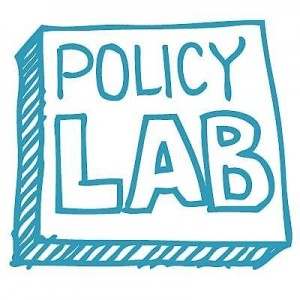 Designing for Policy can mean many things. The first thing to understand is where exactly Design Thinking needs to be applied. Are you designing for policy decisions and delivery or looking to re-design the system?
Designing for Policy can mean many things. The first thing to understand is where exactly Design Thinking needs to be applied. Are you designing for policy decisions and delivery or looking to re-design the system?
Potential areas to design for policy may include: designing the process for making policy decisions; designing the delivery of policy; designing a framework that can be followed to ensure that policy remains within the system and/or designing the policy system. While these are only some of the areas where design thinking could be applied – there are many more areas in policy where Design Thinking would be an asset.
Designing the process for how to make policy decisions is inherently what most people think of when policy design comes up in conversation. However, using Design Thinking to tackle how policy decisions are formed is a great solution for engaging end users and citizens.
From the outset of Designing for Policy, understanding the end clients is pivotal –the people to whom the policy applies and who will be impacted. If the objective is to create policies for indigenous entrepreneurs, then actually finding out what is going on in their environment and bringing them on board as you design the policy is essential. First, find out what challenges Indigenous entrepreneurs are facing and what motivates them. Learn through engaging with them what they are thinking, hearing, seeing and doing as a business and more importantly, how they feel, what they think, etc. as they are applying current policies. Identifying first hand with end clients and hearing what challenges they are experiencing helps in determining what obstacles could be addressed by the policy.
The next step is figuring out what policy levers can be used to address the challenges then brainstorm ideas on how to solve the challenges with current policy levers or identifying alternative levers that aren’t currently in place. Bringing end clients and citizens on board to co-create policy with you is important. Once they understand the available levers and constraints that there may be, it will often be surprising the creative and viable ideas which co-creation can bring forward.
I will be the first to admit that my clients know their business best. The same goes for policy. Those that are impacted by the policy understand what issues may arise or how to make the policy even better for the intent for which it was created. Following the creation of a deeper understanding of the problem and creating solutions, bringing the end clients onboard for the prototyping and testing portion remains the first element of co-creation.
The next step in designing how to make policy decisions is developing multiple prototypes. This isn’t about coming up with an idea and testing that one idea, it is about finding out more information from end users and from other stakeholders – What and why do they like one prototype better than another. Then, applying this additional information to develop a policy to test out even further.
Designing for policy, like other applications of design thinking is iterative. The world around us and the end clients’ needs are continually changing, therefore, polcy design needs to be iterative.